TRANSFORM A ROOM
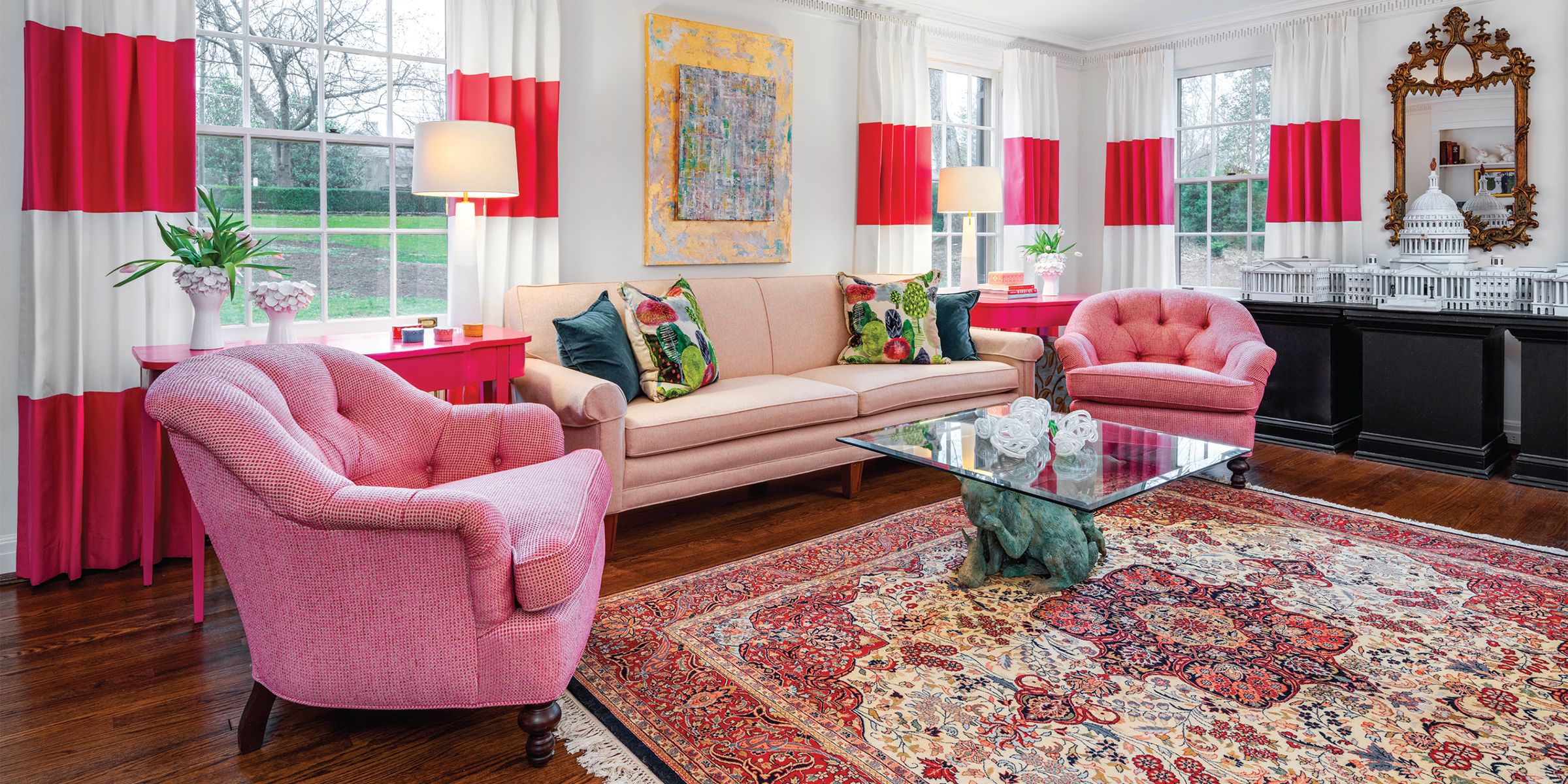
Photo: Michael Patch
How Rugs Can Take an Area from Blah to Bold
 Never underestimate the power of an area rug to transform any room in your house. Area rugs can be spectacular design tools, serving as artwork for your floors or the backdrop that allows existing furnishings to shine. Because rugs also play a starring role in the comfort of our homes, it’s no wonder that selecting a new one requires careful consideration of style, type, size and material.
Never underestimate the power of an area rug to transform any room in your house. Area rugs can be spectacular design tools, serving as artwork for your floors or the backdrop that allows existing furnishings to shine. Because rugs also play a starring role in the comfort of our homes, it’s no wonder that selecting a new one requires careful consideration of style, type, size and material.
Style
Today you’ll find a mind-boggling array of rug styles. No longer are there just the traditional Persian rugs and other patterned Oriental rugs from which to choose. At the same time, Dawn Rezai of Persian Rugs and More in Lynchburg points out that demand for Persian rugs such as the Kashan, Heriz and Kerman styles remains high, especially among those buyers intent on making “generational purchases.” There is also a rainbow of solids, as well as myriad contemporary options, such as bold florals, statement-making geometrics and simple sisals. While an area rug doesn’t need to match everything else in a room, it should harmonize with the textures and colors of your existing furnishings.
Since color is a salient part of style, choosing the color(s) of your new rug provides a natural starting point in the selection process. Do you want your room to feel calming or energizing? Calming colors tend to be lighter, subdued or neutral, whereas bolder and brighter colors are more energizing. In a room with brightly colored objects and patterned furniture, a rug in a neutral or single color will likely work best. Conversely, a room with mostly solid color furnishings can be enlivened by a brightly colored or patterned rug. Any rug will either stand out or blend in, according to its color and pattern.
Type
Rug types are no longer just high or low pile. Today’s rugs are better explained by their construction methods. Better Homes and Gardens explains rug construction with the terms below. Understanding this specialized lingo will allow you to select the best type for your circumstances.
- Tufted: Pieces of yarn are punched through a backing then cut to create a smooth surface called pile.
- Hooked: Though like a tufted rug in that loops of yarn are pulled through a backing, the yarn isn’t cut, leaving a looped pile.
- Knotted: Pieces of yarn are tied, often by hand, to warp fibers on a loom, the most labor intensive method of fabrication.
- Braided: Lengths of fabric, yarn or natural fibers are braided then sewn together.
- Flat-woven: Often called kilims or dhurries, these are woven on a loom, either by hand or machine. Lacking any backing, they are lighter and reversible.
- Shag: Any tufted, woven, or knotted rug with a long, plush pile.
Sizes
Purchasing a rug that is too small is a common decorating mistake. According to interior designer Mary Jean Levin of Roanoke’s Halifax Fine Furnishings, for most moderate size rooms, there should be about 18 inches of bare floor between the edges of a single area rug and walls of the room. In larger, open concept rooms, rugs can be used to define spaces. For instance, one rug might be used for a dining area and another coordinating rug for a seating area. In a dining area, the rug needs to be large enough so that chairs scooted back stay on the rug, whereas a rug in a seating area needs to be large enough so that at least the front legs of the large pieces of furniture rest on the rug. In a bedroom, the rug should frame the bed. This means that an 8′ x 10′ would work for a queen bed and a 9′ x 12′ for a king, again with the front feet of bedside tables resting on the rug’s edge.
Materials
What a rug is made of has everything to do with how it will wear and its cost. Most rugs are either made of natural fibers such as wool, silk, cotton, jute or bamboo, or they are made of synthetic fibers such as polypropylene, nylon, polyester or microfiber. Natural fiber rugs, except cotton and jute, tend to be more expensive and longer wearing, whereas synthetic ones are cheaper, easy to clean and good alternatives for young families and pet owners.
Rug pads?
Always!
Rug pads protect the rugs above them from constant abrasion, prevent slippage and add cushioning. Whether fiber, sponge or foam rubber, a pad cut 2 inches smaller than your rug will prolong its life.
With just the purchase of a new area rug, a room can go from boring to bold. No wonder it can be said that, in terms of decorating oomph, that rugs rule! ✦
RUG SIZE GUIDE
General Rules
1 — Allow for at least 18 inches of visible floor space around the rug.
2 — Have at least the front legs of furniture on the rug.
3 — In a dining room, the rugs needs to be large enough so that chairs stay on the rug when scooted back.
LIVING ROOM 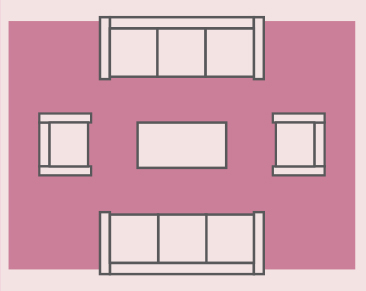
10’x14′ — This size fits in a large room that is at least 11.5’x15.5′.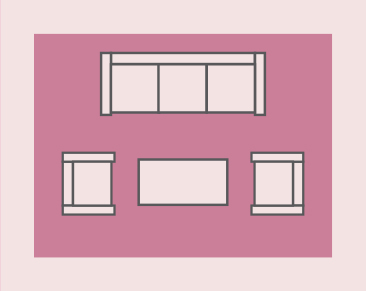
9’x12‘ — This size fits perfectly in a 12’x18’ or larger room.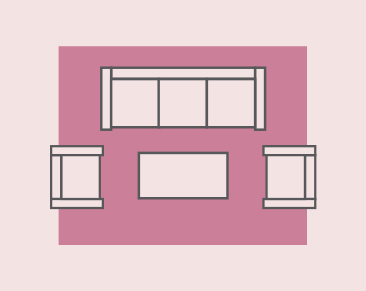
8’x10′ — This size fits in an 11’x13′ or slightly larger room.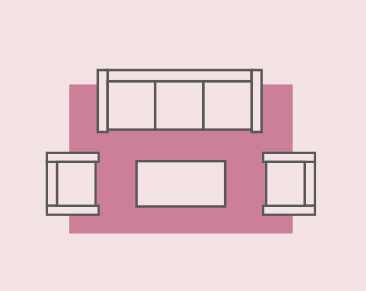
6’x9‘ — This size works best in an 11’x13’ or smaller room.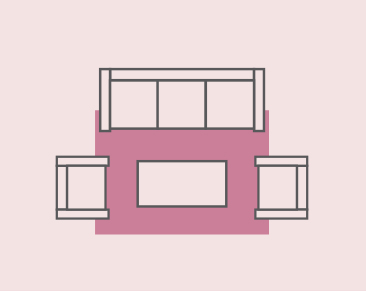
5’x7′ — This size will fit under a coffee table or under two comfy chairs.
3’x5‘ — This size is great for highlighting an area with a chair.
DINING ROOM 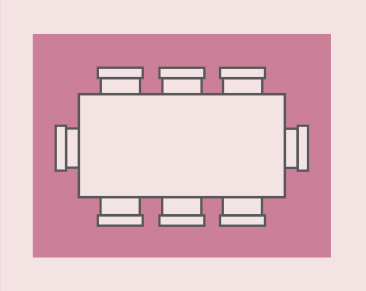
Large — A table for eight or more fits best on a 9’x12′ or 10’x14′ rug. 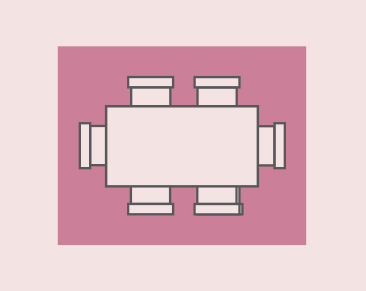
Medium — A table for six fits best on an 8’x10′ or 6’x9′ rug. 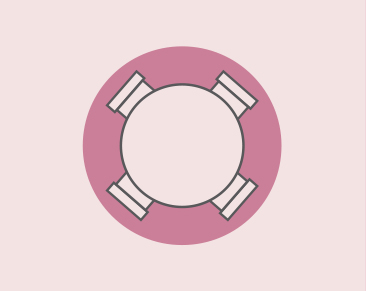
Small — A table for four fits best on a 8′ round rug or a 6’x9′ rug.
BEDROOM 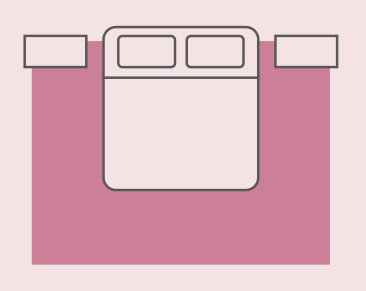
King bed — A 9’x12′ or 10’x14′ rug works best with a king bed. 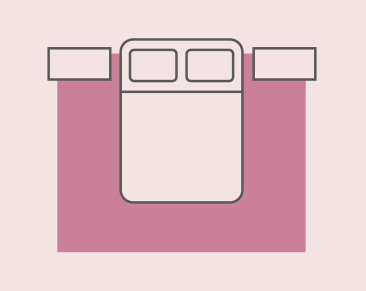
Queen bed — A 8’x10′ rug covers a queen bed and nightstands. 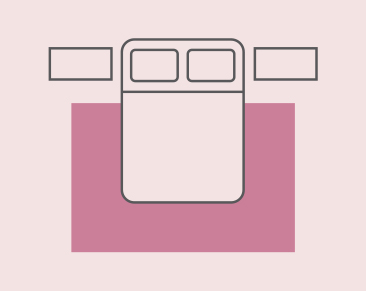
Queen bed — A 6’x9′ rug also works for a queen bed but won’t go under the nightstands. 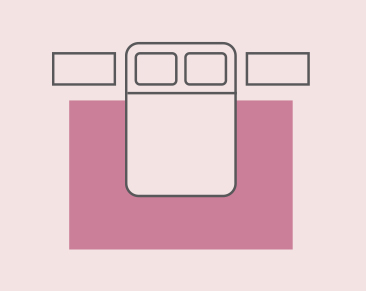
Full bed — A 6’x9′ rug fits nicely under a full bed. 
Twin bed — A 5’x7′, 6’x9′ or 8’x10′ rug all work nicely under a twin bed. 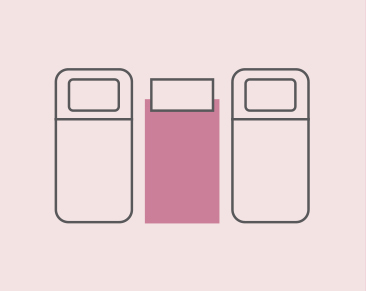
Double twin beds — The best option for two twin beds is to place a 3’x5′ rug between them.
Sources: Ruggable, Wayfair
Area Rugs, bamboo, Braided, cotton, Flat-woven, generational purchases, Heriz, Hooked, jute, Kashan, Kerman, Knotted, microfiber, Natural fibers, nylon, oriental rugs, Persian Rugs, polyester, polypropylene, Shag, silk, synthetic fibers, Tufted, wool










